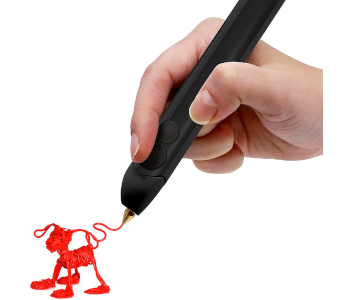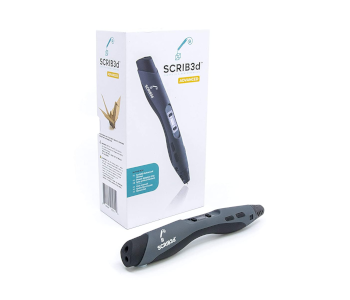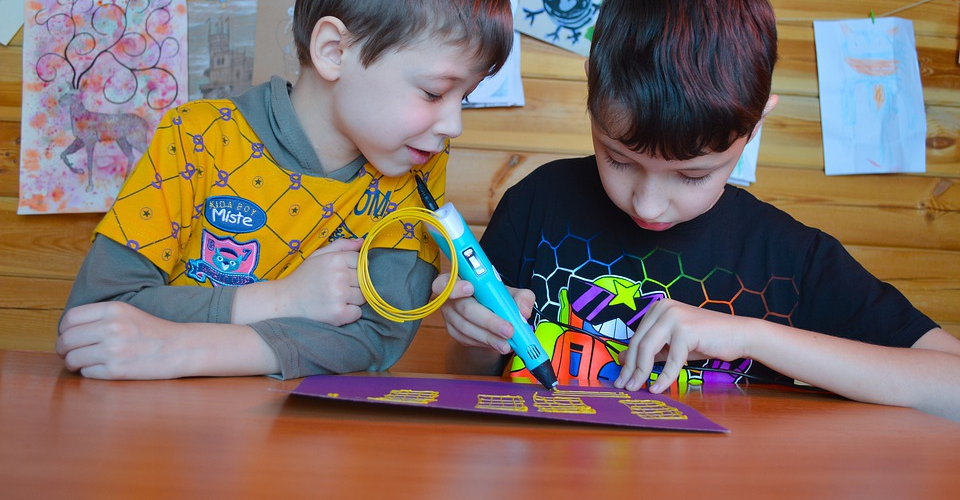How Safe Are 3D Pens?
3D pens print with plastic that can emit harmful fumes when heated. They also have parts that can get hot, especially after long periods of sustained use. For these reasons, 3D pens should not be used by very young kids without supervision. They are generally safe for older kids and teens.
3D pens have often been described as the perfect gateway into 3D printing for kids. They are also great tools for cultivating their creativity. With their immense appeal for young people, we must ask – how safe are these 3D pens? Are there hazards we should know about?
How do 3D pens work?

To better understand any potential dangers of 3D pens, we must first understand how it works. The concept of operations of 3D pens is really not that far off from 3D printing, except that it’s done on a simpler and smaller scale.
Inside each pen is a set of gears that move the plastic material towards the tip and a heating element. The heating element is responsible for melting the plastic, allowing it to be extruded through the tip of the pen as very fine strands. This plastic cools down almost instantly as it exits the nozzle and holds its shape.
Almost all 3D pens have a mechanism for controlling exactly how hot the heating element will get. Some 3D pens also offer speed adjustment to provide optimal control to the rate at which the plastic is extruded through the pen tip.
Most 3D printers require a DC connection to power both the heating element and the extrusion mechanism. There are battery-powered options, but these are not so common.
The hazards of 3D pens
For those who have not used 3D pens before, they can be highly comparable with glue guns. Adults who are into arts and crafts are probably already very familiar with the danger of dripping hot glue. The good news is that 3D pens are certainly a lot safer than glue guns. That being said, here are some potential hazards of working with 3D pens.
Fumes from plastic
One thing that 3D pens and 3D printers have in common is that they need the plastic material to be completely molten for the whole process to work. The danger associated with this specific fact is that plastic tends to release unpleasant fumes when they are heated to their melting temperatures.
The most common plastics used in 3D pens (and in 3D printing) are ABS and PLA. Of the two, ABS tends to release fumes that are much more noxious. This does not mean that PLA fumes are completely safe to inhale. In fact, there is no situation in which inhaling plastic fumes can be good for your health.
The best safety measure for this is to make sure that you are working in a well-ventilated space whenever you use a 3D printer. A room with open windows should suffice. If you plan on using the 3D pen for a long time, then it’s best to wear some respiratory protection.
Hot parts

Melting plastic for 3D pens involves immensely high temperatures – around 200 °C or more. For the most part, 3D pens do a good job of insulating the outer surface of the pen from this heat.
However, the very tip of a 3D pen is often a small, exposed piece of metal. After several minutes of sustained use, this tip can get hot enough to cause a painful burn even with just momentary contact.
For young adults, giving a warning that this part of the pen is very hot can be sufficient. However, the same cannot be said for very young and curious kids. If you want young kids to use 3D pens, then make sure that they do so only under adult supervision.
Electrical connection
3D pens have to be constantly powered by a DC connection. As with any powered device, this can pose a hazard for very young kids. Fortunately, most 3D pens are equipped with very tough and heat-resistant power cables. This makes them less likely to be damaged by tampering, but a bit of warning and supervision does not hurt.
As you can see, the dangers of 3D pens are actually quite avoidable. They aren’t any more dangerous than the standard electrical devices, but leaving young kids to use them all on their own might not be a good idea.
Tips on keeping 3D pen use safe
As we have said, 3D pens are generally safe but there are still hazards to take note of. If you plan on using 3D pens or giving one to your kid, here are some tips to keep them safe:
Buy from reputable brands
As with most products, poor-quality 3D pens also translate to fewer safety features. Make sure to buy your 3D pen from a reputable brand and that it has received lots of good reviews. This might mean having to spend a bit more, but 3D pens generally only cost less than $100. Better safety is well worth the few extra dollars.
Follow minimum age recommendations

3D pens typically come with minimum age recommendations. This should be one of the first things to consider when buying a 3D pen. For instance, the 3Doodler Start + is a very good option for younger children as it is recommended for ages six years and above. It has no hot parts and has a thick grip that fits better for the hands of children.
On the other end of the spectrum are the SCRIB3D Advanced 3D Printing Pen and the 3Doodler Create +, both of which are recommended for kids ages 14 years and up. These 3D pens have more advanced control features and work over a wider temperature range.
Keep a first aid kit nearby
Accidents can happen even with all the safety measures in place. If you have kids working with 3D pens, it is always a good idea to have first aid supplies for addressing burns and other possible injuries.
You don’t need to take extraordinary measures with a 3D pen, even if you want one to be used by your kids. Just be sensible when you buy, and make sure that you are getting an age-appropriate product.
Final thoughts
3D pens continue to be popular devices for kids and for very good reasons – there is probably no other technology that allows kids to unleash their creativity and draw on thin air. However, not all 3D pens are suitable for kids. If you’re planning to give one as a gift, then check the label and make sure that you’re getting a product that has had a good reputation through the years.
3D pens have been in the market for a long time now, so you don’t really need to experiment with new products or brands. In any case, some supervision will still be needed for very young kids even if they are using supposedly kid-friendly 3D pens.


